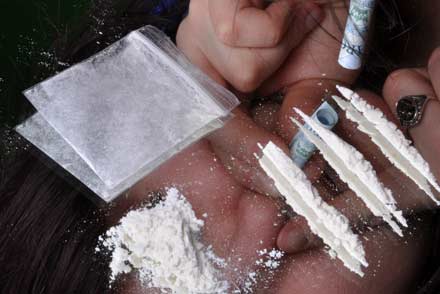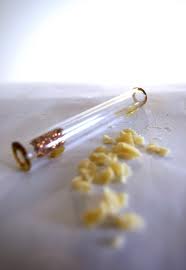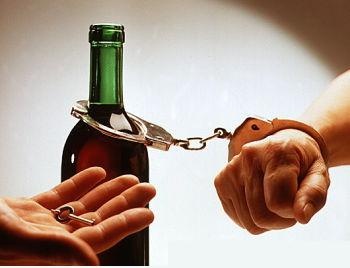Nyaope.
Nyaope, also known as whoonga, is a dangerous and highly addictive South African street drug. Nyaope is a fine white powder that is usually combined with marijuana (dagga) and smoked. It is not always clear what all of the ingredients of nyaope are, and the ingredients may vary from place to place. But one thing is clear: Nyaope is made of a lethal combination of substances, which can include heroin, detergent powder, rat poison, and crushed anti-retroviral drugs (ARVs). ARVs are the medications used to treat patients with HIV. Nyaope is relatively cheap – about R20 for one hit – and a person can become highly addicted after using the drug only once. A user will soon feel as if he needs several hits to make it through the day.
CAT
Methcathinone or “cat” is a synthetic stimulant similar to the natural drug plant khat, which has been used for centuries in east Africa. “Cooked” by bathtub chemists from the legal stimulant ephedrine and such easily-obtained (and highly-toxic) industrial chemicals as battery acid, lye, and paint thinner, “cat” first appeared as a street drug in the Midwest during the 1990’s.
Appearance: White or off-white powder which can be snorted, injected, or swallowed.
Actions/Effects: Like methamphetamine and other central nervous system stimulants, methcathinone can reduce fatigue and block hunger. And just like other stimulants, the drug can also trigger impulsive, erratic behaviour by increasing the action and supply of two main neurotransmitters, norepinephrine and dopamine. At higher dosages, or with chronic use, feelings of heightened confidence and arousal can quickly spin off into paranoia, irritability, and severe depression.
Heroin
Heroin is a highly addictive, illegal drug. It is used by millions of addicts around the world who are unable to overcome the urge to continue taking this drug every day of their lives—knowing that if they stop, they will face the horror of withdrawal. Heroin (like opium and morphine) is made from the resin of poppy plants. Milky, sap-like opium is first removed from the pod of the poppy flower. This opium is refined to make morphine, then further refined into different forms of heroin. Most heroin is injected, creating additional risks for the user, who faces the danger of AIDS or other infection on top of the pain of addiction.
Cocaine
The word cocaine refers to the drug in a powder form or crystal form.1 The powder is usually mixed with substances such as corn starch, talcum powder and/or sugar or other drugs such as procaine (a local anaesthetic) or amphetamines. Extracted from coca leaves, cocaine was originally developed as a painkiller. It is most often sniffed, with the powder absorbed into the bloodstream through the nasal tissues. It can also be ingested or rubbed into the gums. To more rapidly absorb the drug into the body, abusers inject it, but this substantially increases the risk of overdose. Inhaling it as smoke or vapour speeds absorption with less health risk than injection.
Crack cocaine
Crack cocaine is the crystal form of cocaine, which normally comes in a powder form.1 It comes in solid blocks or crystals varying in colour from yellow to pale rose or white. Crack is heated and smoked. It is so named because it makes a cracking or popping sound when heated. Crack, the most potent form in which cocaine appears, is also the riskiest. It is between 75% and 100% pure, far stronger and more potent than regular cocaine. Smoking crack allows it to reach the brain more quickly and thus brings an intense and immediate—but very short-lived—high that lasts about fifteen minutes. And because addiction can develop even more rapidly if the substance is smoked rather than snorted (taken in through the nose), an abuser can become addicted after his or her first time trying crack.
Prescription drugs
Recreational use of prescription drugs is a serious problem with teens and young adults. National studies show that a teen is more likely to have abused a prescription drug than an illegal street drug. Many teens think prescription drugs are safe because they were prescribed by a doctor. But taking them for nonmedical use to get high or “self-medicate” can be just as dangerous and addictive as taking illegal street drugs. There are very serious health risks in taking prescription drugs. This is why they are taken only under the care of a doctor. And even then, they have to be closely monitored to avoid addiction or other problems. People can also have different reactions to drugs due to the differences in each person’s body chemistry. A drug that was okay for one person could be very risky, even fatal, for someone else. Prescription drugs are only safe for the individuals who actually have the prescriptions for them and no one else. Medication containing Benzodiazepine and Codeine are most commonly abused drugs amongst society.
Crystal Meth
Crystal meth is short for crystal methamphetamine. It is just one form of the drug methamphetamine. Methamphetamine is a white crystalline drug that people take by snorting it (inhaling through the nose), smoking it or injecting it with a needle. Some even take it orally, but all develop a strong desire to continue using it because the drug creates a false sense of happiness and well-being—a rush (strong feeling) of confidence, hyper activeness and energy. One also experiences decreased appetite. These drug effects generally last from six to eight hours, but can last up to twenty-four hours. The first experience might involve some pleasure, but from the start, methamphetamine begins to destroy the user’s life.
Alcohol
It is classed as a depressant, meaning that it slows down vital functions—resulting in slurred speech, unsteady movement, disturbed perceptions and an inability to react quickly. As for how it affects the mind, it is best understood as a drug that reduces a person’s ability to think rationally and distorts his or her judgment. Although classified as a depressant, the amount of alcohol consumed determines the type of effect. Most people drink for the stimulant effect, such as a beer or glass of wine taken to “loosen up.” But if a person consumes more than the body can handle, they then experience alcohol’s depressant effect. They start to feel “stupid” or lose coordination and control. Alcohol overdose causes even more severe depressant effects (inability to feel pain, toxicity where the body vomits the poison, and finally unconsciousness or, worse, coma or death from severe toxic overdose). These reactions depend on how much is consumed and how quickly.










